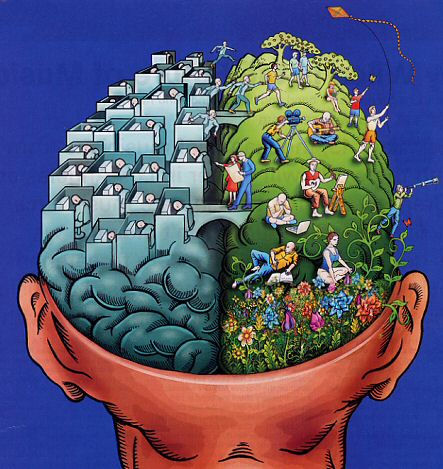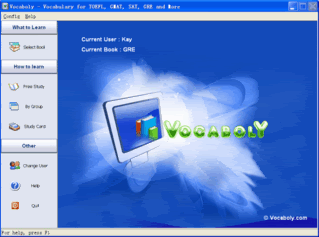How to Start Homeschooling
By Lorraine Curry
You are the best teacher your children will ever have because you love them more than anyone else possibly could. Your mandate comes from God, and your "certification" far surpasses what governments or colleges could give. Add a commitment to homeschooling, and you are well on your way to giving your children the best education possible.

Photo: pixhosting.com
But what about skills and knowledge? Although it is helpful to know how to read and write, even these things can be learned, or re-learned, right along with your children. You can teach what you know, and when your knowledge of a subject isn't quite what you think it should be, you can read aloud and learn together, or your children can learn to teach themselves.
Low Cost
Would it surprise you if I told you that homeschooling can be free or nearly-free? There are options that can keep costs down, if you choose to use them. We spent very little on homeschooling. Each year we have purchased some items, but only because I wanted to, not because we needed them. Spending on curriculum should be done prayerfully, even if you can afford it, because many items are purchased and not used. Books can be resold, but usually for a fraction of what has been paid for them.
The Library
The library can save you a substantial amount of money and offers a cornucopia of books, from non-fiction for science and history to classic literature and biographies, as well as other materials as varied as current events magazines, research volumes, Shakespearean videos and tapes, painting technique videos, homeschooling programs, foreign language tapes, phonics tapes and computer equipment.
Christians are sometimes cautious about the library. But if you read-aloud, you can skip over objectionable parts. Recently I discovered that Charlotte Mason, in her book, A Philosophy of Education, also suggested this skipping of anything not appropriate for children. You could even skip the book entirely. If a book that you are reading has an anti-Biblical view, such as evolutionary theory, you can discuss what the Bible does say. Children need to know opposing thought to better defend the faith and become independent thinkers.
Another fine resource is the library in your home which you can build by finding high quality old books at auctions, garage sales, thrift stores, and library sales or right here at http://www.easyhomeschooing.com/rare-antique-books.htm l! We have been collected for so many years and had such great books here at home that we eventually used our own library more than the public library. I prefer this as it keeps us home and saves us time.
Reading Aloud
The actual schooling process begins with the basics - the skills that your children will need to use almost every day throughout their lives. Professionals' opinions back up our family's experiences - reading aloud gives children the best possible start in education.
An emphasis on the written word at all ages (especially important when very young) rather than on visual stimulation will result in bright children. Reading aloud or reading silently will "exercise" your child's brain as he builds hisvery own "pictures," based on the words that are read. When good books are read, those "pictures" will stir up proper judgment, rational thought and result in wise children with character. Contrariwise, with the visual, the work has been done for them. No need to think; no growth in maturity.
What if your children are not interested in hearing you read aloud, or in reading themselves? In this case, proclaim a fast from videos, TV and computers. Keep reading, and before long they will develop an appetite for good books.
Starting to Homeschool
If homeschooling is started when children normally start school (5-7), there can be an easing into routines. One subject can be taught at a time, staying with that subject until some measure of achievement is reached. Start with phonics, then, none at a time, go on to reading, handwriting, creative writing and finally basic math. This simple technique keeps the pressure off, which in turn keeps a love for learning alive. Moreover, there is only a minimum time requirement. If your child is older and you are taking him or her out of institutional schooling, there might be more time required at first. In order to find the time for homeschooling, you may have to make a decision to eliminate unnecessary activities, wasted time.
Teaching Phonics
All school subjects will be built upon the mastery of reading. Today many parents with children in public or private schools find themselves having to re-teach reading. This shouldn't be, as the school has the child many hours per day to teach this basic of basics. In the schools and in the home, the exclusive use of phonics will result in children who can read well.
There are many tools available for teaching phonics. But most are far too expensive. You can teach phonics for free! Mothers, tutors, and governesses have been teaching this way for hundreds of years. Your tools are a book such as a Bible, a paper and pencil or a black or white board. With your choice of tool, teach the sounds of the individual letters, starting with the short vowels. Then teach the consonants, and finally the combinations ("sh," "ch" and so forth). Then after your children know several letter sounds, use a simple playground slide diagram to help them blend the sounds into words. Write the "ch" at the top and the "at" at the bottom. Then tell your child to make the "ch" go down the slide and run into the "at." Go on to the long vowels. You can also emphasized patterns in groups of words (such as "gate," "mate," "grate" and "plate").
If you want to purchase a phonics course, I suggest Simply Phonics or Alpha-phonics.
As soon as your child knows how to read a few words, he or she needs practice. You can borrow Hop on Pop or similar phonics based books from the library, or use a simple phonics based reader. Don't try to use a Dick and Jane book. These see-say books have too many sight words in them, and will just frustrate your new reader. We used McGuffey's, which we received as an introductory offer from a book club. You needn't continue with reading classes until you have completed the books. I am very much against all the unnecessary work for both teacher and student that some "experts" consider to be part of a well rounded program. Such things as spelling and comprehension do not need to be learned separately. If a child is read to, learns to read phonetically, is read to, starts reading fluently, is read to, and continues to read individually, he or she will learn and learn well all the peripherals of our language.
Writing
Writing goes hand in hand with reading, for a winning "language arts" program. Encourage your children to be storytellers. If they can't yet write, write their stories down for them. If you have a tape recorder let them record their stories, and replay them. Have them draw a picture to go with their story. As soon as they can write, have them write their own stories, but don't pay any attention to errors at this point. You don't want to discourage them! If your children want you to spell the words for them, do it. Eventually they will know several words. Then you can point out those that are misspelled for them to learn. (Your student can either write each word ten times or spell them aloud several times to learn them.) Save all your students' papers, or at least the best ones - they will be treasures someday!
Arithmetic
For arithmetic make your own flashcards for drill. And for all other subjects, first plan what you want to teach over the school year. Then using the library or your own library, read-aloud together. Have your children tell back, or write on what you have read. We gathered for read-alouds sessions even when our children were perfectly capable of independent study.
After all, isn't being together as a family what homeschooling is all about?
If you have been thinking and praying about homeschooling, or if you have been feeling overwhelmed or financially burdened by what you think you must do - or must buy - to homeschool, I want to encourage you. Homeschooling need not be expensive nor difficult. The public schools give us a great example that spending does not equal quality education. A better choice is to use simple, tried and true techniques and reap the fruit of Godly, well-educated children.
Lorraine Curry is the author of 5 Star Easy Homeschooling books. See and link to more articles, FREE copywork, subscriptions, ebooks and more at http://www.easyhomeschooling.com/


















